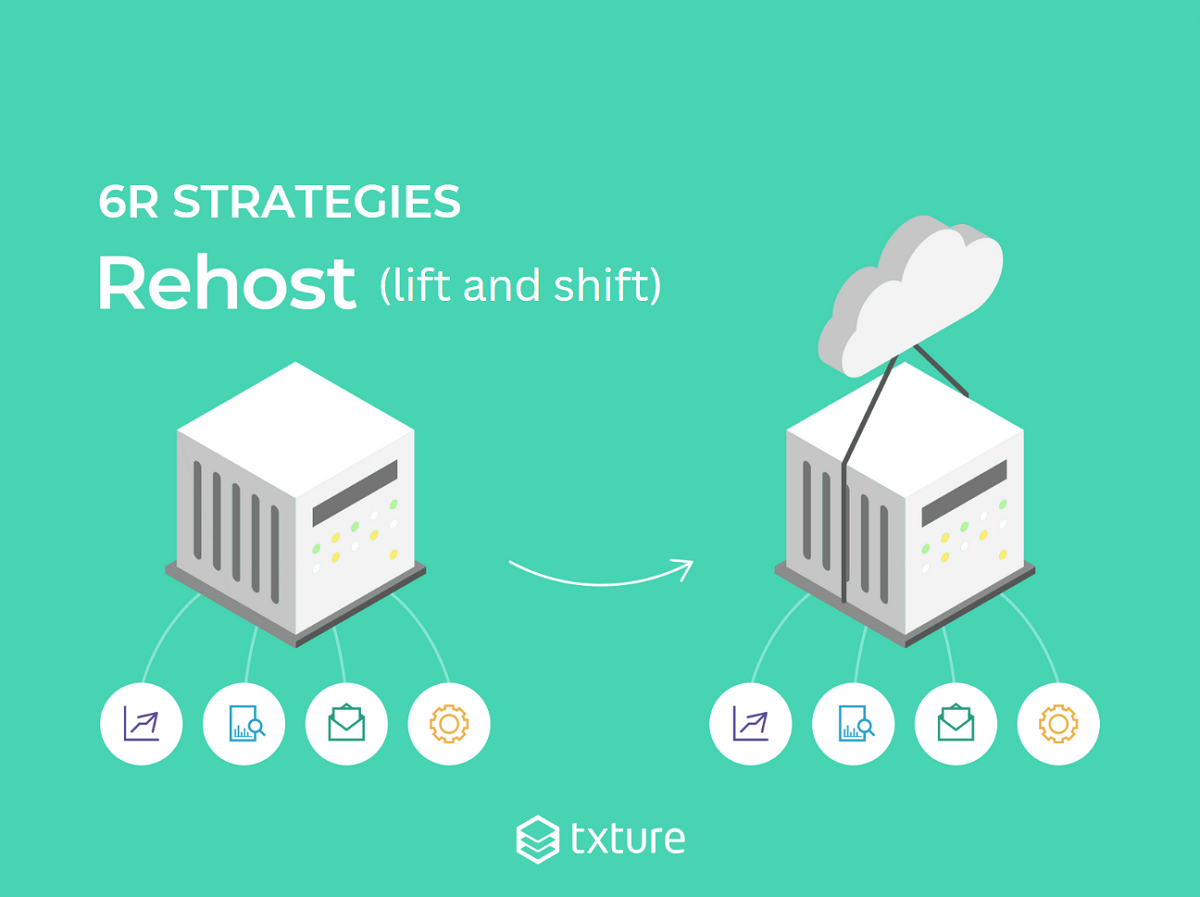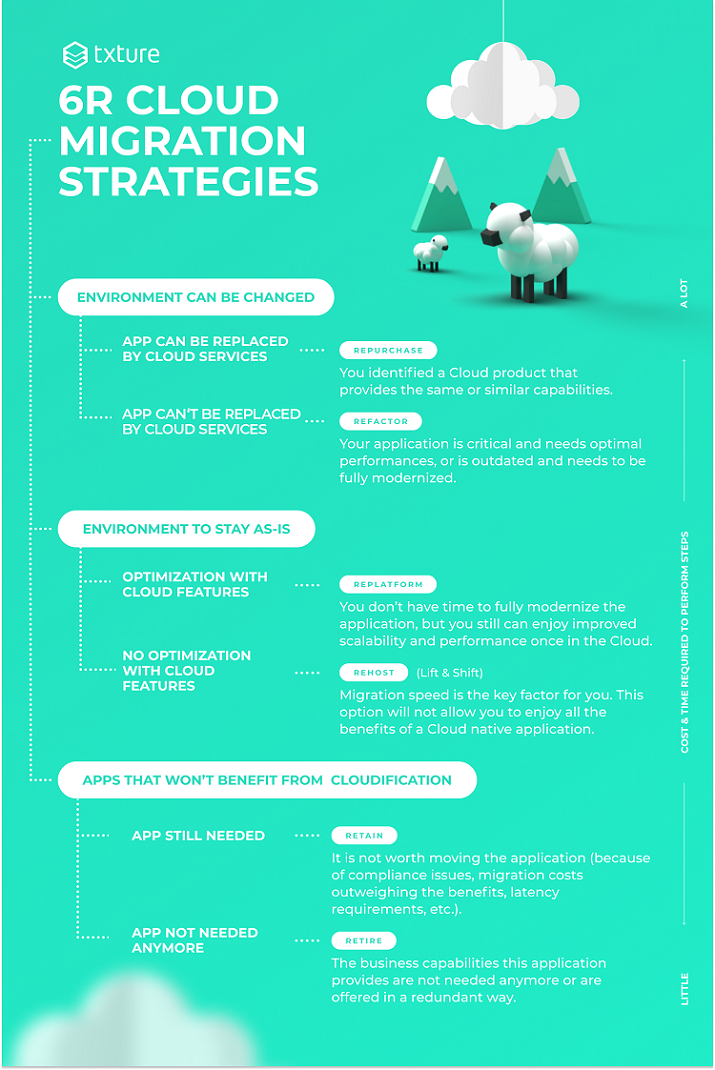What is lift and shift? Cloud migration strategies

A lot of organizations are “moving to the cloud”, but this generic utterance covers a wide range of scenarios. While some organizations will rewrite the core architecture of their applications in order to fully experience the benefits of a cloud native infrastructure, other organizations will settle for a fast migration of their existing applications, leaving the architecture as-is.
It’s not about which approach is the best, as there is no “one size fits all” cloud migration strategy. In the end, the best approach largely depends on the organization’s particular needs, priorities, and current technical environment.
A popular framework in this regard is the 6R model. It originates from a “5Rs model” created by Gartner in 2010, and that was later extended by AWS. The 6Rs outline different approaches to move an application to the cloud, as well as the benefits and drawbacks of each approach.
If you are working on a cloud transformation project, you probably already have come across the 6R framework, but it’s always good to review the basics! In this article, we will focus on the “lift and shift” approach. In the following, you will learn in more detail about this strategy, its advantages and disadvantages, and some use cases where lift and shift can be relevant.
Need a quick overview of the 6Rs? Have a look at our infographic:
 6Rs of cloud migration infographic
6Rs of cloud migration infographic
What is lift and shift?
The lift and shift approach (also called “rehosting” strategy), is the process of migrating a simple copy of an application and its data to a cloud infrastructure, with minimal modifications (or no modification at all). While some other strategies, like refactoring, involve rewriting the whole architecture of the application, in the context of lift and shift, the application’s architecture remains the same.
This approach is a fairly popular one, especially for organizations that are at the very beginning of their journey to the cloud, and want to migrate parts of their application stack easily, with a short time to production.
Advantages of the lift and shift strategy
Lift and shift is definitely the best option when it comes to moving to the cloud quickly and with minimal effort. By opting for this strategy, you will avoid the time investment and complexity associated with a full rewrite of your applications. In many cases, the migration process can be done automatically, thanks to the dedicated tools for lift and shift migration or “workload mobility”.
It is also the most relevant strategy to minimize potential vendor lock-in. If you are rewriting your application in a more cloud native fashion, it gets harder to perform a cloud-to-cloud migration to another cloud provider.
Finally, for specific, self-written application, you will not always find a good alternative as Paas or cloud native solution. Then, rehosting will be the only possible option.
 You can move to the cloud faster and with lower effort using a lift and shift approach.
You can move to the cloud faster and with lower effort using a lift and shift approach.
Drawbacks of the lift and shift strategy
By opting for a lift and shift strategy, you will not experience the typical benefits associated with a cloud environment. To obtain those, you would need to re-write your application in a cloud-native fashion. This is the case, for instance, of the refactoring strategy. It does not mean the rehost strategy is a wrong approach. But if your main goal is to achieve more scalability, agility or higher performances, you should consider other migration strategies.
Also, with lift and shift, you still have servers in the cloud, which you have to manage and update. This is a recurring task and obviously costs manpower. A replatforming or refactoring strategy would relieve your IT team from this task, but it is usually more expensive.
Lift and shift could be your best choice if:
-
Speed is the most important factor for you. If you are on a tight deadline, and need to move some of your applications quickly, lift and shift can be the right approach.
-
Your application is already in a virtual environment. In this case, its current architecture might already be suited to a cloud infrastructure, and you can migrate it as-is.
-
Your team is missing skills for more complex transformation strategies. Generally speaking, lift and shift can serve as a first step for organizations that just start their cloud transformation, and do not have a full skill-set to manage a fully cloud-native environment yet.
Need to define which 6R strategy works best in your case? Download our decision guide poster and find your ideal migration approach.
Seeing is believing!
Discover how Txture helps you define the right migration strategy and speeds up your cloud migration
Reach out to our colleagues from Partner Management and have them show you Txture.
Related posts
29.4.2025Application ModernizationDefine your scope for IT modernization2.3.2025
Cloud StrategySelecting the right cloud data center for hosting your workloads27.6.2024
Cloud optimizationA great driver to maximize cloud value: moving to instances with modern processors 24.5.2024
Cloud Knowledge5 best practices to manage change during a cloud transformation5.4.2024
Generative AIHow to welcome Generative AI into your existing tech ecosystem
